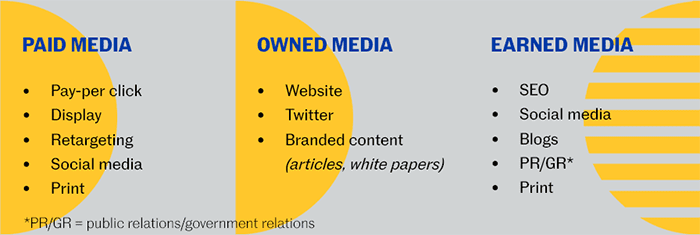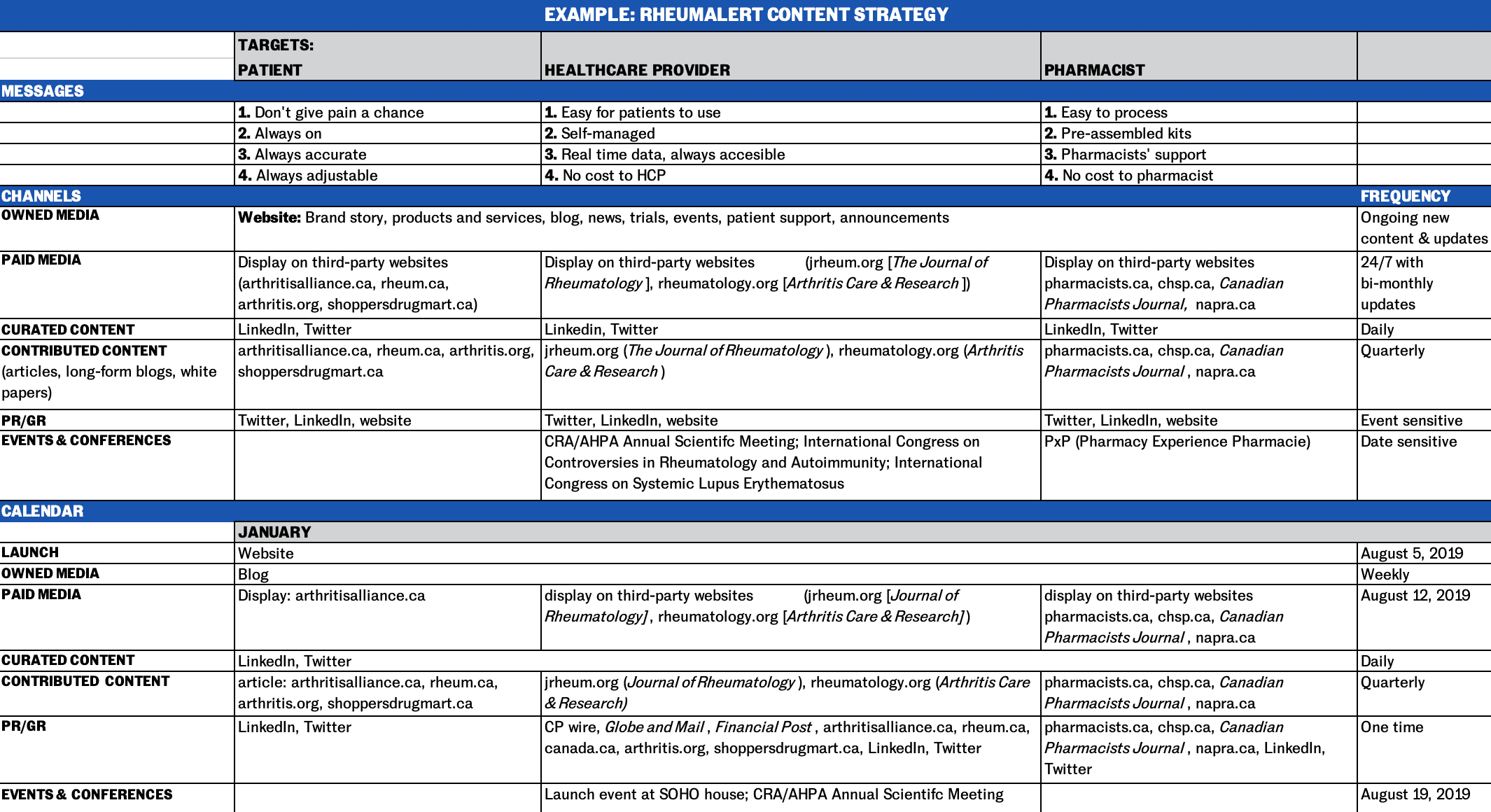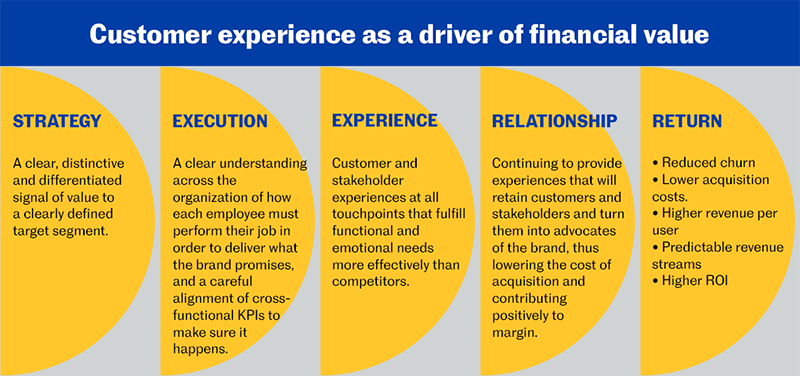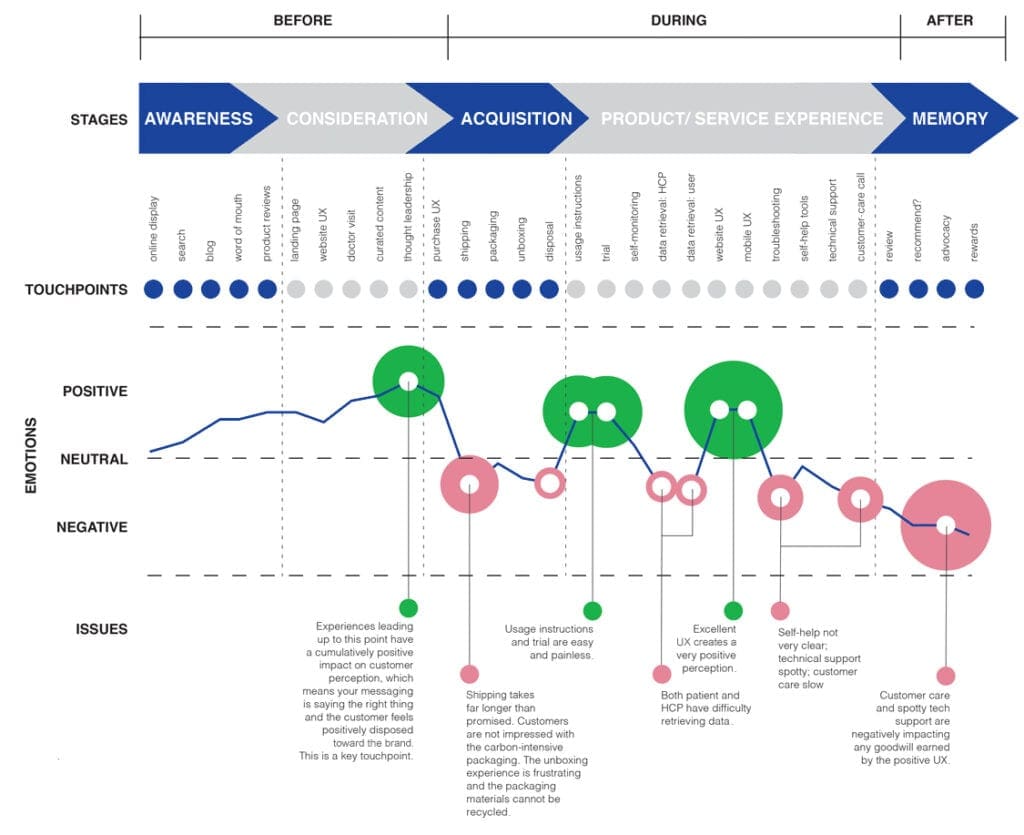Activating your brand strategy
Congratulations! You have a business strategy. You know why you are in business, where you will compete and how you will win.
You also have a brand strategy. You know who your customer is and what their unmet needs are. You know your competition’s strengths and gaps. You and your team have worked hard to articulate your purpose, your value proposition and your positioning. Now what?
It’s time to activate.
You activate your brand strategy through messaging, which consists of marketing communications in all of its forms, from identity design to website to trade show to social media to sales presentations. You activate your business strategy through customer experience. Experience is about how the customer experiences your product or service. This is more traditionally associated with business operations, but brand strategy plays an important role inasmuch as it articulates what the business strategy is meant to deliver.
Activating your brand strategy through messaging
Here are the tools you need to activate your brand strategy through messaging:
- Business strategy: Outlines why you’re in business, where you will play and how you will win
- Brand strategy: Acts as a guide to more detailed messaging
- Key messaging: Presents your main messages, derived from your value proposition, positioning and proof points
- Content strategy: Entails which messages will be delivered to whom, in what channel and when
- Creative brief: Articulates your requirements for engaging external creative resources
Key deliverables
- Name and identity: Your brand needs a trademark-able name and visual identity.
- Website: This provides a home base for your brand and is your most active channel.
Tools: Content strategy and creative brief
You will have already created the first three items in the list above. Let’s look at the ones you don’t have yet: content strategy and creative brief.
Content strategy
A content strategy is about getting the right content to the right people for the right reason at the right time. It includes plans for:
- Paid media (public relations—online and offline)
- Owned media (e.g., website, Twitter, LinkedIn, Instagram)
- Earned media (press)
- Targeted campaigns (multichannel)
- Curated content (LinkedIn, Twitter, email)
- Contributed content (on third-party websites)
- Short- and long-form blog posts and presentations (third-party websites, meetings)
- Primary and secondary research (professional journals)
- Thought leadership, e-books, e-newsletters, white papers (professional journals, trade journals, website)
- Key events and conferences
It’s helpful to consider the three types of media at your disposal:


The idea is to use paid media to push traffic to owned media, which should then seed earned media. As always, this is much easier said than done. Tip: Earned media is gold.
You’ll need to plan out your content strategy, detailing your messages, channels and calendar.
To visualize this in context, imagine you are a medtech startup with an app called Rheumalert™ that’s designed for people with arthritis. Your high-level content strategy deployment might look like this:


The idea is to create a “content at a glance” worksheet that identifies your messages, targets, channels and timing for various types of content. This type of spreadsheet is a starting point—you’ll need to then expand on the key messages for different channels and generate all the content necessary for a month. You’ll also need a more detailed calendar for detailed messaging versus each target, with separate content and production files and dockets for each channel. The worksheet above is still too high-level for daily, monthly and quarterly content changes.
You can see from the amount of content and the frequency with which it changes that you may need to hire outside help to do this, depending on the size and talent profile of your team. It is a full-time job to keep content fresh and accessible.
Creative brief
For each outside vendor that you engage to help you, there needs to be a creative brief. This is a very common tool in design firms, ad agencies, branding agencies, public relations (PR) firms and digital agencies. Creative briefs vary from one place to the next, but there are basics common to all.
Sample: Creative brief
Activating your business strategy through customer experience
Lou Carbone, founder of Experience Engineering, a customer experience design firm, once developed a very simple mental model of customer experience.
For Carbone, it’s all about how the customer feels:
- How a customer feels about you before they interact with your brand
- How a customer feels about you during an interaction with your brand
- How a customer feels about you after interacting with your brand
He points out that while most companies spend 80% of their marketing budget on #1, it’s #3 that has the greatest impact on customer loyalty.
This means that #2, the experience itself, is the most important driver of perception in the long run.
As mentioned in the first article of this series, branding is an exercise in perception management. The key is to align what you say with what you do. This is where business strategy overlaps with brand strategy. So many brands overpromise and under-deliver. In their zeal for a deal, they are tempted to exaggerate what they can do. This might get the sale, but it won’t keep the customer. Experience eats messaging for breakfast every time.
This simple mental model shows how customer experience is meant to work:


To activate your business strategy through customer experience, you need the following tools:
- Business strategy: Focuses on why you’re in business and how you will win
- Brand strategy: Acts as a guide to business process and behavioural norms
- Key messaging: Presents main messages, derived from your value proposition, positioning and proof points
- Customer journey map: Delineates the key touchpoints from pre- to post-purchase
Tool: Customer journey map
You will have already created the first three tools in the list above. A customer journey map allows you to look at the entire customer experience—before, during and after purchase—with a view to identifying its strengths and weaknesses so that strengths can be leveraged and weaknesses eliminated.
This example for our fictional app called Rheumalert illustrates the basic components of a typical customer journey. The most salient feature of this tool is that it is multi-layered. It maps the customer experience from a high level down to the small details.
Rheumalert: Customer journey map


In this map, the top layer shows the five stages that a customer goes through when engaging with any product or service. Each of those stages breaks down into individual “touchpoints.” The number of these depends upon how complex the product or service is and the way in which the user experience (UX) has been designed.
Below that we have an emotional layer. This is a reflection of the Carbone model mentioned earlier. It is critical to understand how the experience makes customers feel at every point along the way so that you can prioritize and address any issues that arise. Remember: emotion drives decision-making, no matter how rational you think you or your customer are.
In this example, we have used green to signal positive impacts and pink to signal negative ones. The size of the circles in the “emotional” layer is calibrated to show how much impact a touchpoint can have on the business. The bigger the circle, the bigger the impact.
Studying the above map, you can instantly see where the successes and failures are occurring. The first two stages go smoothly, which may mean that your content marketing strategy is working well. Then there is a big drop after purchase: it seems the shipping takes forever and the packaging is both hard to figure out and non-recyclable, which creates a negative impression. Then the data retrieval seems to be a problem. Thankfully, the instructions for use are very clear and the user experience is very positive. But then it gets negative again when customers need help to fix problems.
Overall, we have a mix of negative and positive impressions, with clear indications as to the biggest concerns. We can now start working on solutions to the most pressing issues. At this point, it is very helpful to add another layer below that would show cross-functional responsibilities for each of the issues that need addressing. In most cases, it is never just the concern of one department and various players are required to cross the silos and solve the problem together.
There are different kinds of maps, depending on the nature of the problem you are trying to solve. The above example combines stages and touchpoints with emotional responses. It could be extended to map against departments and capabilities. For the process-minded, an additional layer could even capture the underlying business process design.
For solving specific problems, the journey can be broken down into segments, each with its own more granular map. You may, for example, wish to focus on any one of the stages or touchpoints using the same vertical components, but allowing horizontal expansion to reflect more detailed touchpoints and actions.
The customer journey map is a tool that can be used during design prototyping as well as at more mature phases of development when the product has been out in the market for a while and you want to assess and fine-tune the touchpoints. The map is always a work in progress—it never really ends.


